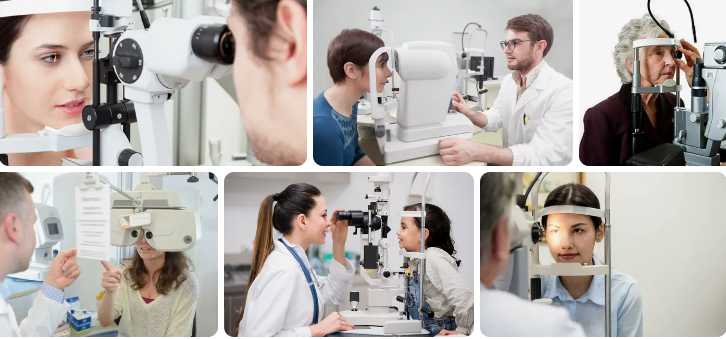
Discover the importance of regular DFE Eye Exam, what to expect during the appointment, common tests, interpreting results, and benefits of early detection. Keep your eyes healthy!Are you due for an DFE Eye Exam but feeling unsure about what to expect? Look no further! In this blog post, we will delve into the significance of regular DFE Eye Exam and what they entail. From common tests and procedures to understanding the results, we will cover it all. Discover the benefits of early detection and why prioritizing your eye health is essential. Stay tuned as we break down what you need to know before your next visit to the eye doctor. Keep reading to ensure you are well-prepared for your upcoming DFE Eye Exam!
Importance of Regular Eye Exams
DFE Eye Exam are an essential aspect of maintaining overall eye health and detecting any potential issues early on. By scheduling routine appointments with an eye care professional, individuals can ensure that their eyes are functioning properly and are not at risk for any serious conditions.
During a comprehensive DFE Eye Exam, the optometrist will assess various aspects of your vision, including your ability to see near and far, as well as check for any signs of eye diseases such as glaucoma or macular degeneration. These exams are crucial for catching any problems in their early stages, when they are most treatable.
It is recommended that adults have an DFE Eye Exam at least once every two years, and more frequently if they have certain risk factors such as diabetes or a family history of eye disease. By prioritizing regular eye check-ups, individuals can maintain good eye health and potentially prevent any long-term issues from developing.
What to Expect During an Eye Exam
When you schedule an DFE Eye Exam, it is important to know what to expect during the appointment. The first step is typically a comprehensive review of your medical history and any current vision concerns. This information helps the eye doctor understand your overall health and any potential risk factors for vision problems.
During the actual exam, you can expect to undergo a series of tests to evaluate your vision and the health of your eyes. These may include a visual acuity test to measure how well you can see at various distances, a retinal exam to check the health of the back of your eye, and a glaucoma screening to assess your risk of developing this potentially sight-threatening condition.
Another common part of an DFE Eye Exam is a refraction test, which determines your eyeglass prescription if needed. This involves looking through a series of lenses to see which ones provide the clearest vision. Overall, an eye exam is a painless and non-invasive process that plays a crucial role in maintaining your eye health and overall well-being.
Common Tests and Procedures
When you visit your eye doctor for a comprehensive DFE Eye Exam, there are several common tests and procedures that you can expect to undergo. These tests help your eye doctor assess your vision and overall eye health, as well as detect any potential eye conditions or diseases.
One of the most common tests that your eye doctor may perform during an eye exam is the visual acuity test, which measures how well you can see at various distances. Another important test is the refraction test, which determines your prescription for glasses or contact lenses.
Other common procedures that you may experience during an DFE Eye Exam include a dilated eye exam, which allows your eye doctor to get a better view of the inside of your eye, as well as tonometry, which measures the pressure inside your eye and can help detect glaucoma.
Interpreting the Results
When you go for a comprehensive DFE Eye Exam, it’s important to understand the results and what they mean for your eye health. The various tests and procedures conducted during the exam provide valuable information to your eye doctor about the overall health of your eyes.
After all the tests are completed, your eye doctor will interpret the results and discuss them with you. They may explain the findings in detail, point out any areas of concern, and recommend further action if needed. It’s important to pay close attention during this discussion and ask any questions you may have.
Interpreting the results of your DFE Eye Exam can give you valuable insights into the condition of your eyes and overall eye health. By understanding the findings, you can take proactive steps to maintain healthy vision and address any potential issues before they escalate.
Benefits of Early Detection
Early detection of eye conditions is crucial for maintaining good eye health and preventing vision loss. By getting regular eye exams, individuals can catch any potential issues early on, allowing for prompt treatment and management. This can greatly improve the chances of preserving vision and preventing serious complications.
Regular DFE Eye Exam can also help detect underlying health conditions such as diabetes and high blood pressure. Many systemic diseases can have ocular manifestations, making the eyes a window to overall health. By catching these health issues early through routine eye exams, individuals can seek appropriate medical care and potentially prevent more serious complications.
Furthermore, early detection can lead to more effective treatment options. The sooner eye conditions are diagnosed, the more likely they are to respond well to treatment. Timely intervention can help preserve vision and improve quality of life for those affected by eye conditions.